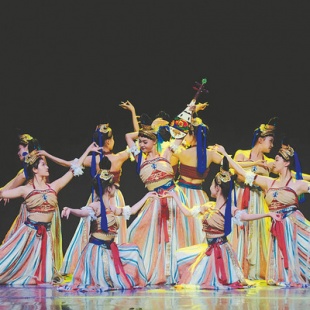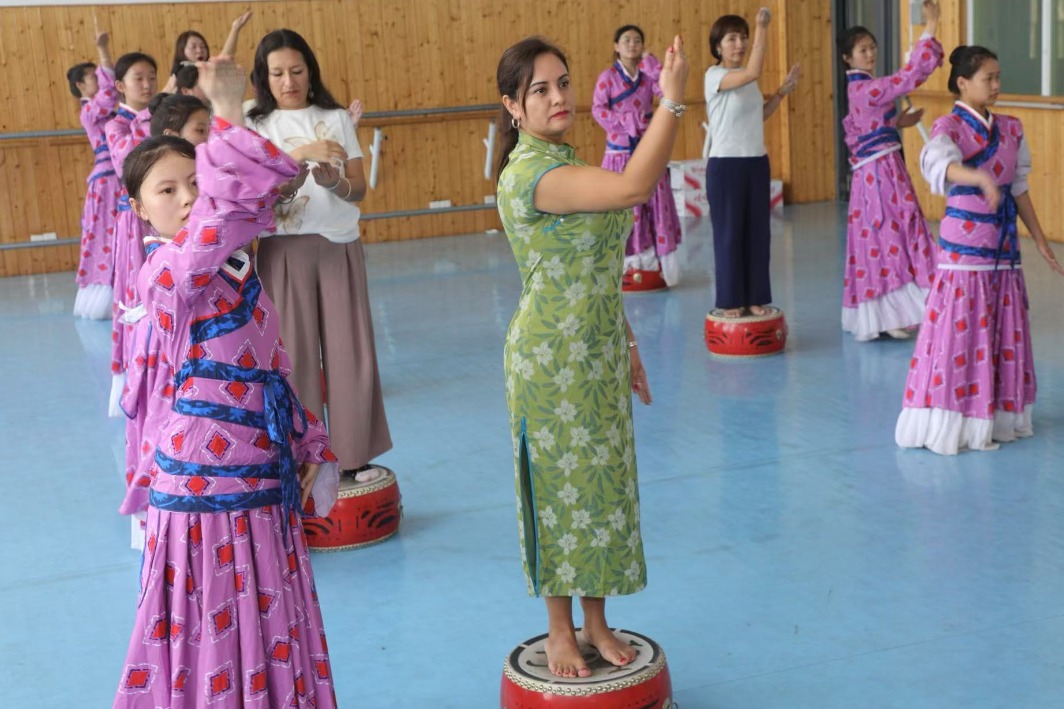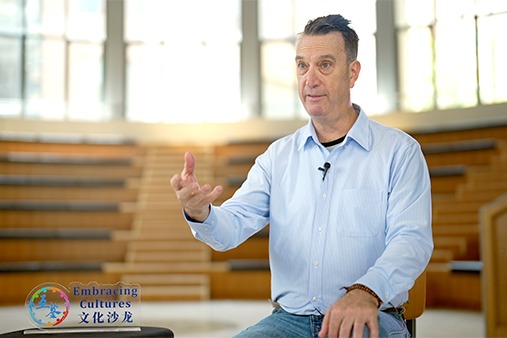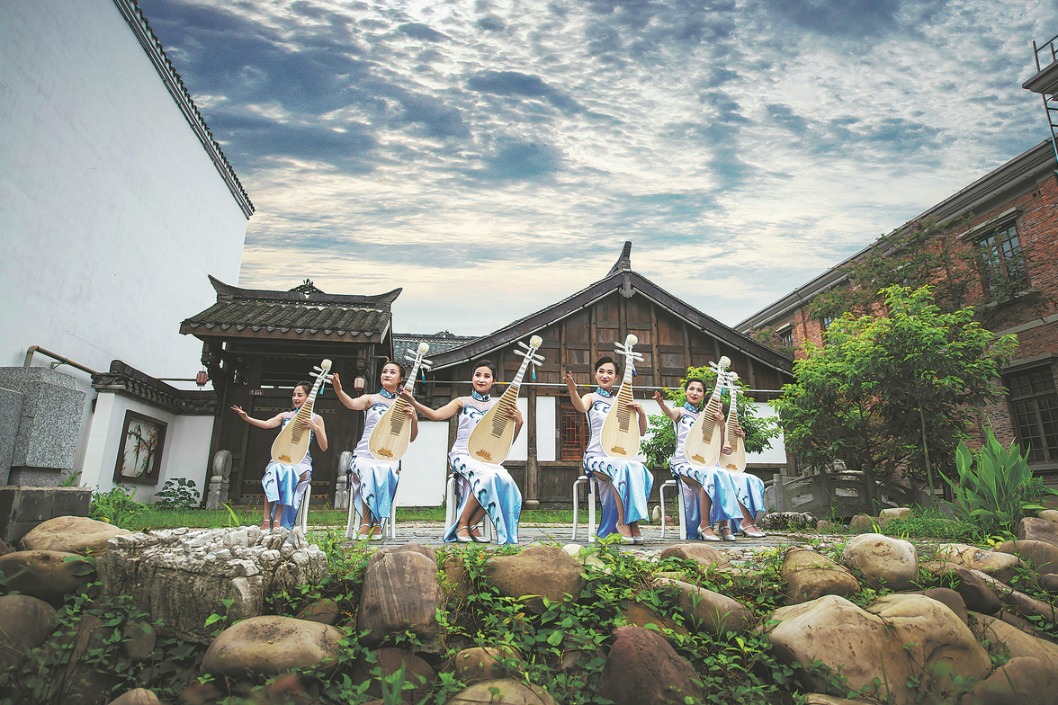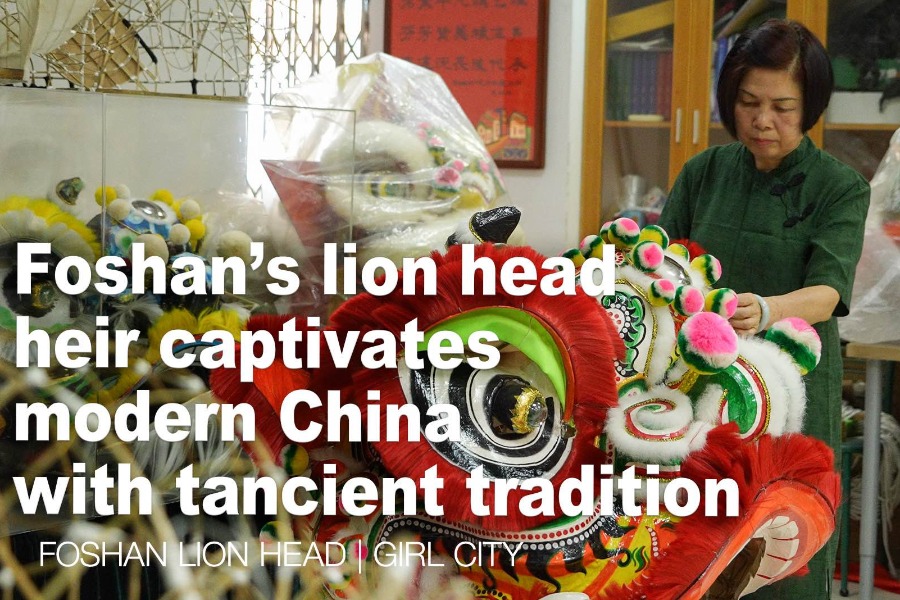Dancing for Dunhuang
Experts pass down a moving art inspired by Mogao Caves murals, Cheng Yuezhu and Ma Jingna report in Dunhuang, Gansu.

On some of the murals inside the Mogao Caves in Dunhuang, Gansu province, is the iconic image of flying apsaras, celestial beings draped in diaphanous attire and billowing ribbons.
The elegance exuded by these airborne fairies inspired artists to translate their poses into dance moves, particularly in the 1970s when the Gansu Song and Dance Ensemble captivated the Chinese dance scene with the original dance drama Flower Rains Along the Silk Road.
Dance experts like Gao Jinrong, a pioneering scholar, have been researching the murals and sculptures, and Dunhuang dance has evolved into an important Chinese classical dance genre.
In Dunhuang, educators are cultivating a new generation of dancers. Northwest Normal University's Dunhuang College, with departments such as dance art, fine arts and tourism, is one school dedicated to researching and promoting Dunhuang culture.
Dunhuang College's dance art department was established in 2014, according to the department's director Su Ruixuan.
"Like other professional dance academies, our curriculum includes courses on ballet, Chinese classical dance, modern dance, choreography and folk dance, along with dance history and theoretical courses," she says.
"However, because of our unique location, a highlight and compulsory course is Dunhuang dance training and performances."
From their first semester, the students are required to study theoretical learning of Dunhuang's history and culture, particularly the murals in the Mogao Caves, to provide a solid foundation for practical Dunhuang dance training from the second semester.
In addition to fundamental technique training, the students learn routines that sequence individual dance moves and poses before rehearsing excerpts from classic dance productions and choreographing original pieces.
Zhao Yuru, a sophomore in the department, says that thanks to the proximity, students often go on trips to the grottoes to view the murals, imitate the original poses, and compare them with today's dance moves.
One of her favorites is Cave 112, which depicts a flying apsara featuring a "reverse pipa playing" pose — hands reaching up and plucking the strings of a pipa (four-string Chinese lute) on the back, a signature pose in Dunhuang dance.
"Among the caves with 'reverse pipa playing' images, Cave 112 is the most classic. The pipa player takes the central role with several musicians playing other folk instruments positioned on both sides. I feel a sense of majesty when performing the gesture," Zhao says.
The program has 365 graduates and current students. Around half the graduates joined professional dance troupes while the other half work as dance instructors.
According to Su, teachers in the department work to develop their own curriculum inspired by the characters and stories depicted in the murals.
In this way, they can better guide students to create original works in their junior year.


